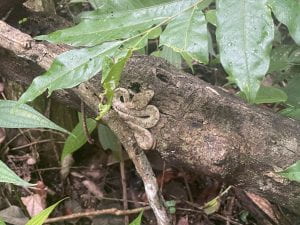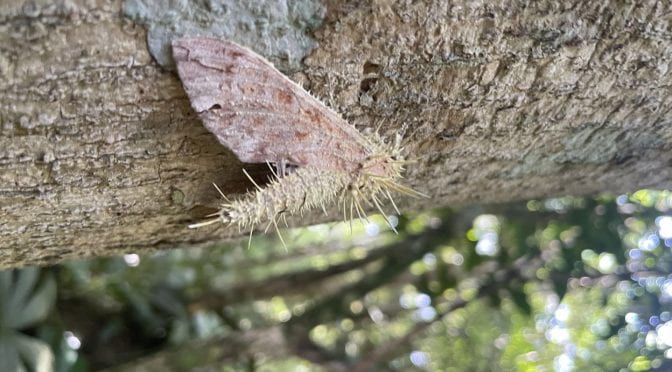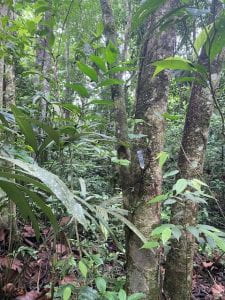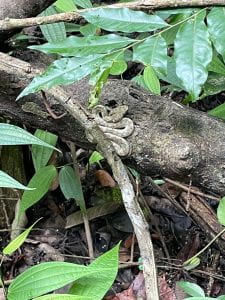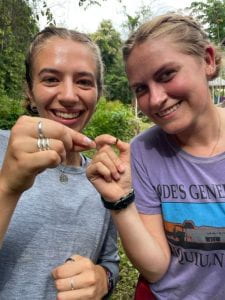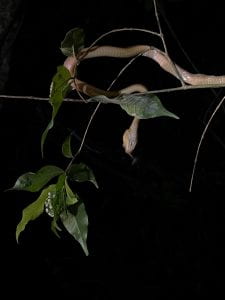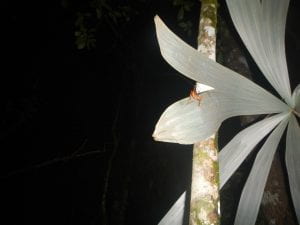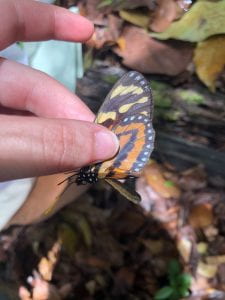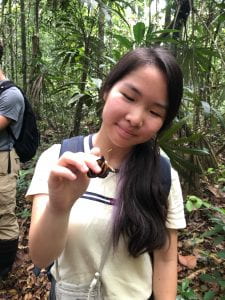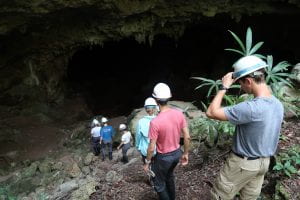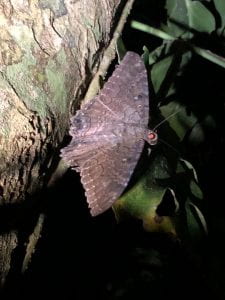Hi all, it’s Faith with Day 11 updates from the 2022 Belize trip!!!
Today we had another round of early morning bird watching, and it seems we keep adding more and more coffee to our cups. Because of the fog, we didn’t see much, so we had and nice morning chat.
After breakfast, we went over to the classroom to watch Micheal’s presentation on soil (specifically soil, not dirt). After the presentation the professors told us we had to pee in vials to put out in the rainforest… and then count the arthropods that are attracted to it. I wasn’t happy about it, but sometimes you have to pee in the rainforest in the name of science. This is actually one of our experiments.
We hypothesized that arthropods would be 1) more attracted to the pee vials than the water vials, 2) more arthropods would be on the forest floor than canopy over all, and 3) that a higher ratio of canopy arthropods would be in the pee vials than the water vials than the ground arthropods. After filling the vials, we set out to place 16 stations in the forest, at least 10 feet apart. One of each vial type (water and pee) were placed on the ground and in the trees at each station. We plan on checking them tomorrow to collect our findings.
Even thought this experiment was…. Something else … I was glad we went on the Mayan trail because I saw a jumping pit viper (Atropoides mexicanus)! Phoenix was walking and happened to notice it shuffling through the path leaves. It was nearly identical to the deal leaves’ color, and it was unusually small. We got plenty of pictures. After seeing it, I asked the professor if they had ever seen an elusive eyelash viper on the trip, to which he said “we’ve never seen one on a Belize trip.” I had figured that would be the case since these vipers are hard to find. Literally as he said that, Elena yelled that there was another snake. You guessed it, sitting on a log about 1ft above the ground was a lichen-colored eyelash viper (Bothriechis schlegelii). I was almost afraid to identify it as one because I was in disbelief! Of all the reptiles to find, this was one of the best. Later on, we got to show the lead park ranger the viper because he hadn’t seen a wild one even after working here for 12 years! This was only the begging if of our luck…
After lunch we searched around the research station for leaf cutter and mounts. We found a few by the far cabins, and we began to dig them up! We started with a small 1 yo mound and eventually found the fungus growing room and Queen! After becoming ant finding experts (not really lol), we tried digging up another nest and got nothing but spiders! Nevertheless, Prof. Solomon convinced us to keep digging saying that the ants would get here eventually. Instead of ants, however, we duh up a Mexican burrowing toad!!! He was so gelatinous!!! He was defiantly one of the trips coolest finds.
Since today ended kind of early, we did presentations before dinner, I presented on reptiles!
I’ll update you for our next hike, till then!
QOTD: “mark is real” no
“Ohhhh tomorrows day is father day!”

